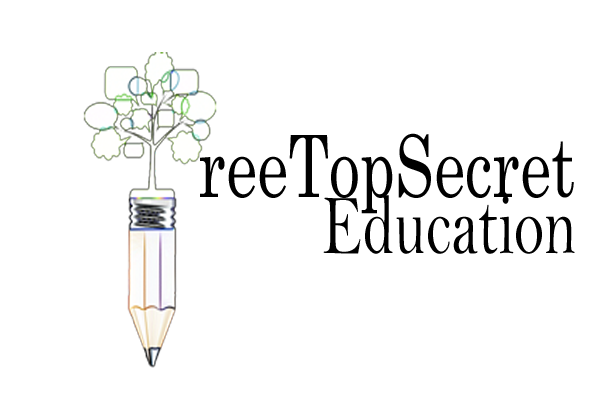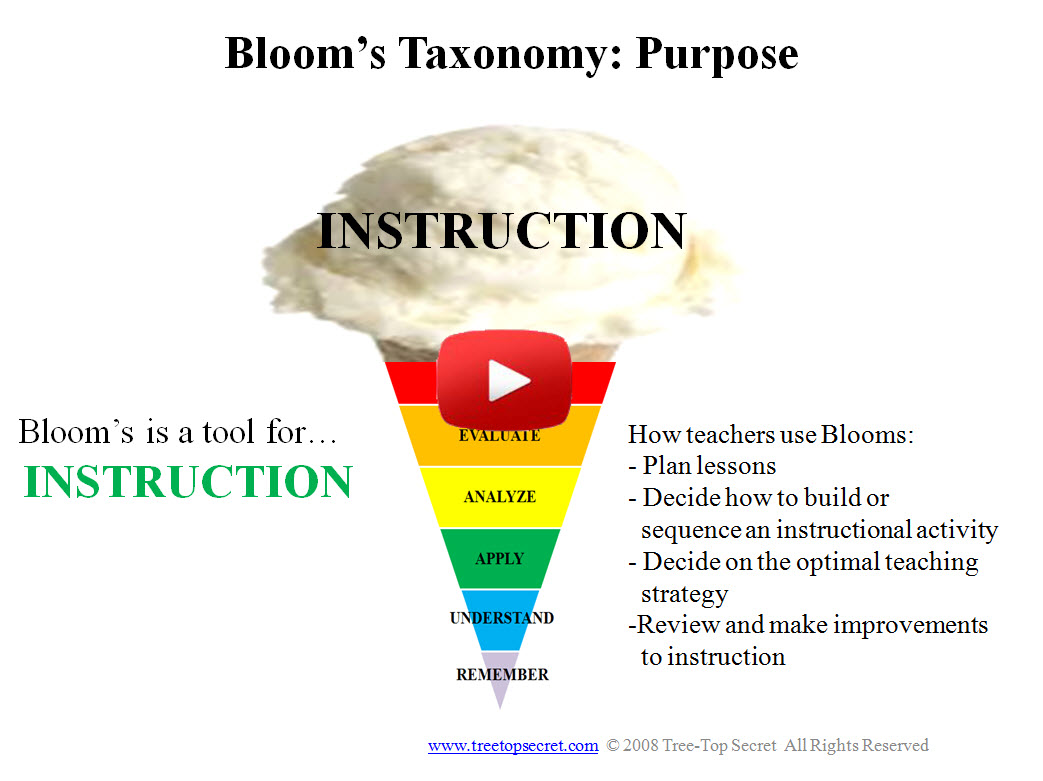Bloom’s Taxonomy and Webb’s Depth of Knowledge DOK
You’re not alone if you have questions about Bloom’s Taxonomy and Webb’s Depth of Knowledge. A few years ago I was coordinating district-wide workshops, and I asked teachers about topics they would like to see included in their back to school professional development sessions. These two frameworks were at the top of the list. As a result of that initiative, I even had the chance to speak with Dr. Norman Webb who designed the Depth of Knowledge framework.
Bloom’s Taxonomy and DOK Presentation on YouTube
I’ve put together a presentation to help you understand each framework. It has over 3,000 views on YouTube… that’s amazing. You can watch it by clicking Bloom’s Taxonomy and Depth of Knowledge (DOK) .
Quick and easy way to understand the difference is…
Bloom’s Taxonomy is used to plan instruction – your daily lessons.
Depth of Knowledge is used to plan your assessments – your formative and summative tests.
Taxonomy and the Inverted Triangle 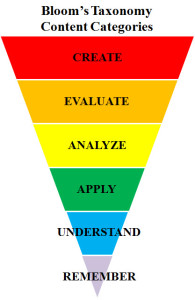
A taxonomy is a system of classification.
A system is divided into groups or categories.
A triangle is often segmented to show different groups or categories in a system. An inverted triangle creates a hierarchical structure where the size and placement of the top segment encourages you to think it has the most significance.
Bloom’s Taxonomy
In 1956, Benjamin Bloom and a team of researchers developed the original taxonomy with these categories:
Knowledge
Comprehension
Application
Analysis
Synthesis
Evaluation
In 2001, Anderson and Krathwohl revised the framework:
Remember
Understand
Apply
Analyze
Evaluate
Create
Learning builds on itself as you move from one level to the next. The sequence begins at the REMEMBER level where content is simple and concrete.
The final segment is CREATE where content is complex and abstract.
The inverted triangle shows Remember at the lowest level. The small and lowest segment may make you think that this level is not as essential as the levels above. However, this level is where the student learns the basic facts and fundamentals of every concept. It is a critical piece of the learning cycle.
How to use Bloom’s Taxonomy
Use Bloom’s as you plan instruction… your lesson plans.
Use the framework to…
– Decide how to build or sequence an instructional activity
– Decide on the most effective teaching strategy
– Gauge how deeply your students are using and comprehending the subject matter
– Review and make improvements to instruction
– Evaluate the worksheets and resources you are currently using
Webb’s Depth of Knowledge
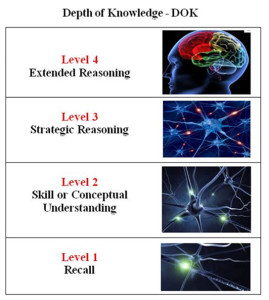
In 1997, Dr. Norman Webb introduced the Depth of Knowledge framework.
The four levels of the framework:
Level 1 Recall
Level 2 Skill or Conceptual Understanding
Level 3 Strategic Reasoning
Level 4 Extended Reasoning
At Level 1 Recall, the objectives are simple and concrete.
At Level 4 Extended Reasoning, the objectives are complex and abstract.
How to use Depth of Knowledge
Use Depth of Knowledge as you plan assessments… your formative and summative tests.
Use the framework to…
– Assess learning
– Assess the standard or learning objective
– Determine the level of a learning objective
– Gauge how deeply your students have learned the subject matter
– Evaluate alignment between curriculum, instruction, and assessment
– Review and make improvements to your daily evaluations, quizzes, weekly tests, and benchmark
Blooms for Instruction and DOK for Assessment Chart
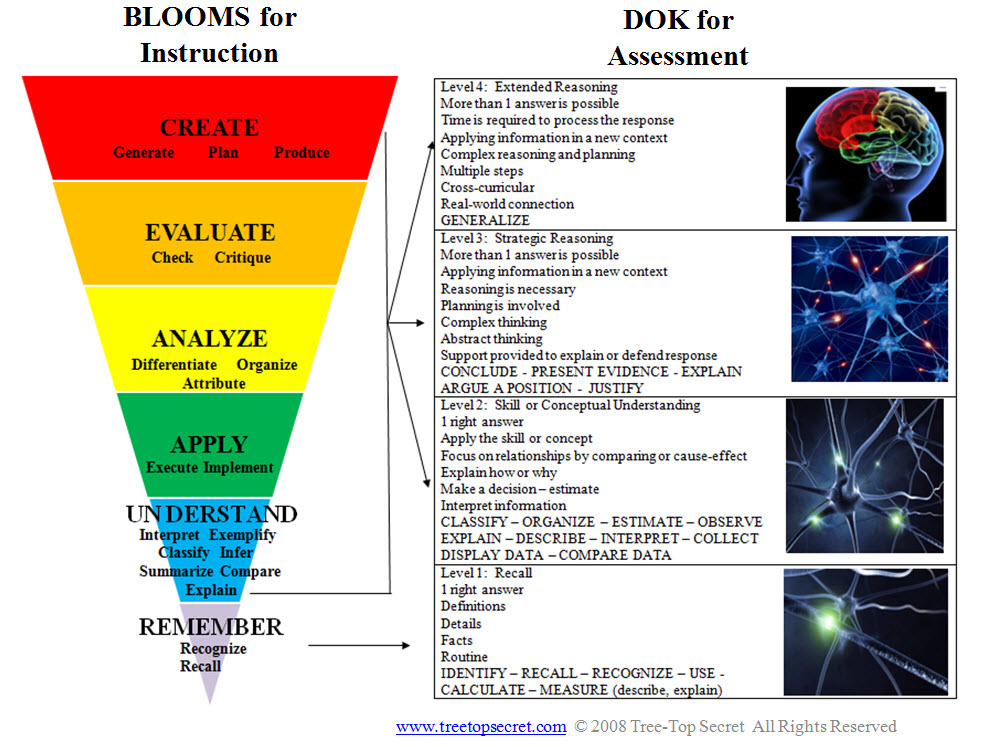
Print 2 copies of this Blooms and DOK Chart.
Place one copy with your lesson planning book. Refer to it as you design and write your lesson plans.
Place the other on a classroom bulletin board or wall. Get into the habit of referring to it as you assess how your students are working and processing information.
Wrap-up
If you found this post and/or the video helpful, please share it with your fellow teachers and colleagues.
Share the link via email, Facebook, Twitter or Pinterest.
Please let me know if I can clarify the information or if you have any questions.
Thank you for your support!
Veronica Lopez,
Educational Consultant
vlopez@treetopsecret.com
